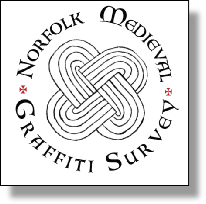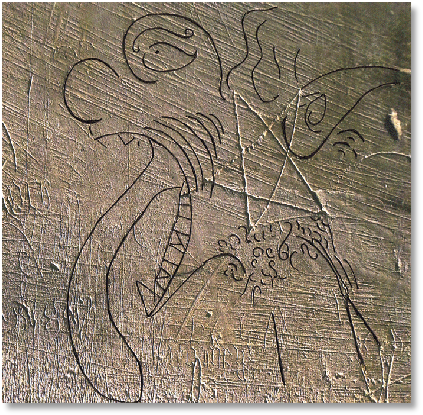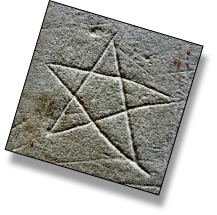









The pentangle is an extremely ancient symbol whose use has been recorded as far back 3000BC. Since the reformation the symbol has become associated with the magical arts and, in more recent centuries, it has become particularly associated with Wiccan practises and Victorian concepts of ‘black’ magic. However, during the middle ages it is clear that this symbol was regarded as a specifically Christian symbol with no ‘evil’ connotations and, more specifically, was seen as a symbol of protection. According to the 14th century poem, Gawain and the Green Knight, the symbol represented the five wounds of Christ, the five virtues of a Knight and was taken as a symbol of fidelity.
The pentangle is most certainly one of the less prolific ritual protection marks found in medieval churches. Compared to the compass drawn motifs it is relatively rare, appearing in only a dozen or so Norfolk churches surveyed to date. However, it appears in sufficient quantities in diverse locations for it to be regarded as an apotropaic marking. Like the Solomon’s Knot, the pentangle would appear to act specifically against demons, trapping them within the endless line and literally pinning them to the wall, such as the magnificent example recorded at St Mary’s church, Troston. Pentangles are also sometimes used as mason’s marks, supporting the idea that there was no malign influence attached to them as a symbol, although the difference in execution between apotropaic and Masonic pentangles is readily apparent.















